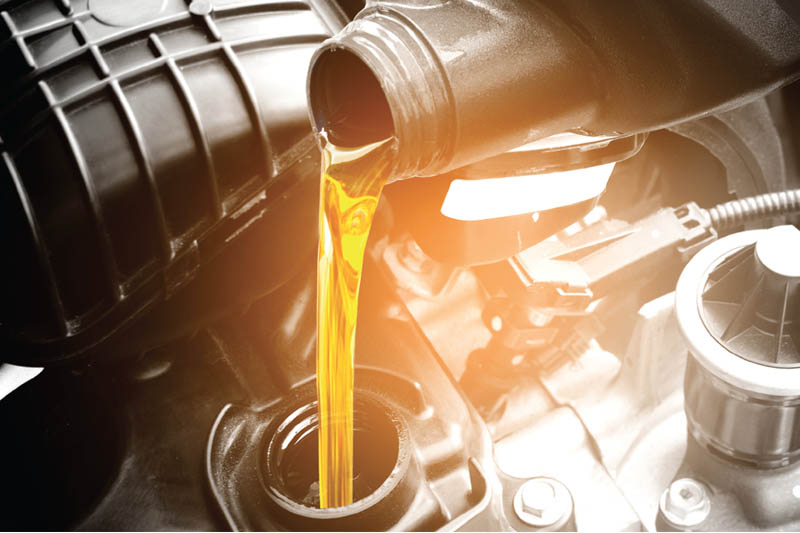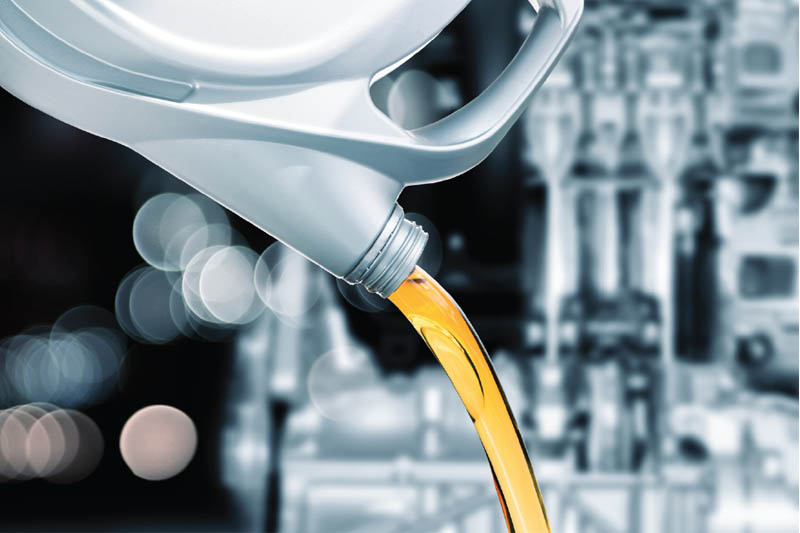
Lubricants have already made a significant contribution towards reducing emissions from commercial vehicles, according to Andrew Goddard, Chairman of the Verification of Lubricant Specifications (VLS).
Commercial engine technology has evolved significantly over the past few decades. To meet increasingly stringent Euro standards and customer needs for economy and performance, smaller engines are running at higher temperatures to maximise efficiency, power output, and fuel economy.
Less viscous, synthetic engine oils have been developed to support this improved engine performance and fuel economy. Higher miles per gallon (mpg) has been an important target for vehicle manufacturers, as getting more mpg means more efficient use of fuel, less fuel expended per mile, and, therefore, lower emissions per mile.
Andrew Goddard, Chairman of independent trade body the Verification of Lubricant Specifications (VLS), comments: “The latest generation of ultra-efficient Euro VI engines are running at higher temperatures, under instances of higher pressures with higher output ratios and smaller sumps, in a delicate balance of intricate engine technology.
“Where 15W40 engine oils used to be commonplace in workshops, thinner, less viscous, semi-synthetic lubricants such as 10W30s or synthetic lubricants such as 5W30s are now being produced to provide suitable lubrication in these challenging conditions.”
According to the European Automobile Manufacturers Association (ACEA), modern European commercial vehicles are already over 30% more fuel-efficient than they were 30 years ago. This reduction in CO2 has been achieved at the same time as the dramatic decreases in NOx gas and particulate matter required by the Euro standards.
A report commissioned in 2019 highlighted the significant contribution already made by engine lubricants to improving fuel economy and lowering CO2 emissions. The study, produced by independent global engineering and environmental consultancy Ricardo, estimated that:
- The direct benefit from engine lubricant technologies would deliver 1.2–3.9 Mt CO2 e/year of avoided emissions in 2020 (compared to 2005 lubricant technology) and will continue to reduce emissions by a further 0.9–2.7 Mt CO2 e/year by 2030
- When indirect benefits are also considered, total avoided emissions were estimated to be 17.8–33.4 Mt CO2 e/year in 2020 and additional reductions could reach 6.0–9.0 Mt CO2 e/year by 2030
- Lubricants have delivered an important portion of the decarbonisation of the EU; avoided emissions account for 2.2 up to 4.1% of reduction per year in road transport CO2 emissions to 2020. The expectation was this could lead to an additional 1.0–1.3% reduction by 2030.
ACEA revisions
The changes in engine design have triggered an update to the ACEA sequences, which identify relevant performance standards for lubricants specifically tailored to the European market. The current series that lubricant marketers are blending to were produced in 2016. Revisions were expected in 2018 and 2020.
Now anticipated to release later in 2021, the ACEA 2021 Heavy Duty Diesel Sequences are expected to include upgrades to the ACEA E8 and ACEA E11 specifications, focusing on enhanced oxidation performance and piston cleanliness.
New heavy-duty F Sequences (ACEA F8 & ACEA F11) are also likely to be introduced. These will require lubricants to meet a HTHS viscosity of 2.9 to 3.2 mPa-s to provide additional fuel economy benefits whilst ensuring engine protection and durability remains uncompromised. As engine technology evolves, lubricant standards must keep pace to reflect future usage and customer needs.
The pace of change is expected to accelerate. At the end of 2020, Europe’s truck manufacturers made a landmark agreement that all new trucks sold will be fossil-free by 2040. Based on average fleet replacement rates, this would allow the entire heavy-duty fleet to reach carbon neutrality by 2050.
However, manufacturers cannot achieve this alone. ACEA claim that significant work needs to be done, including the roll out of a vast network of charging points and hydrogen stations, capable of supporting the huge number of alternatively powered vehicles required.

Road to carbon neutrality
Policy framework also needs to be put in place to drive the transition to carbon neutrality, including incentivising the take up of zero emission vehicles through taxation and other frameworks such as CO2 based road charges.
At the moment, 98% of the 6.2 million commercial vehicles on Europe’s roads are diesel. In order to reduce carbon emissions by 30%, around 200,000 commercial vehicles will be needed on Europe’s roads by 2030. At the moment, however, electrified commercial vehicles account for only 0.04% of all new heavy duty vehicle sales.
The latest generation of highly efficient, ultra-low viscosity lubricants are doing an important job to help reduce vehicle emissions. But as a result, oil selection is becoming harder for mechanics.
Traditionally, when newer oils were developed, they were designed to be ‘backwardly compatible’. This meant that if they claimed to meet a particular standard, they would be compatible for applications where earlier standards are recommended. However, this is becoming increasingly difficult as modern engines develop so quickly. Using the wrong oil risks accelerated wear to gears and bearings. Left unchecked, it could lead to eventual engine failure, meaning higher maintenance costs for your customers and potential damage to your business’ reputation.
Ageing vehicle parc
According to the ACEA 2021 ‘Vehicles in Use’ report, the average age of commercial vehicles on the UK roads is 7 years old. With the economic impact of Coronavirus and the huge reduction in new commercial vehicle sales which saw UK heavy duty registrations decline by 39.6% in 2020, we can expect to see that number rise.
On the one hand, this is good news for workshops. With more older vehicles on the roads, there is greater demand for servicing, repairs and MOTs. However, as the average age of the vehicle parc increases, special attention needs to be paid to regular maintenance and servicing to ensure trucks and vans stay in optimum condition and do not start to produce higher emissions.
Choosing the right oil choice for these older vehicles can also become more difficult, with an increasing array of lower viscosity products on the market.
Andrew Goddard comments: “At VLS, we always recommend referring to the original vehicle handbook to identify the correct oil. Looking beyond the viscosity to specific ACEA and OEM standards ensures that the lubricant is fit for purpose in that specific vehicle.
“If you are in any way unsure of which oil to use, we suggest that technicians get in touch with the OEM or use an online database where you can type the vehicle number plate in to receive specific oil recommendations.”
He concludes: “The lubricants industry has worked hard over the past few years to play it’s part in the emissions challenge. As the industry navigates these changes, independent trade body VLS is working hard to educate users and uphold product standards.
“Responding to specific complaints, VLS independently verifies lubricant specifications to ensure that products really can deliver what they claim. VLS’ role is to protect and educate workshops, transport operators and everyone involved in the industry to ensure that the engine oils they are using are fit for purpose.”








